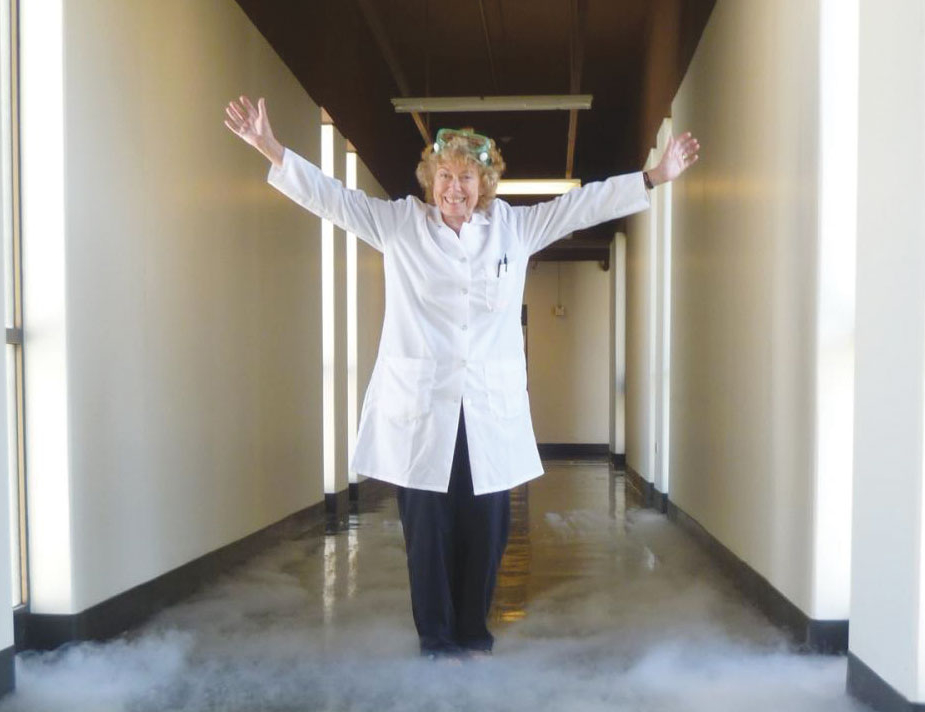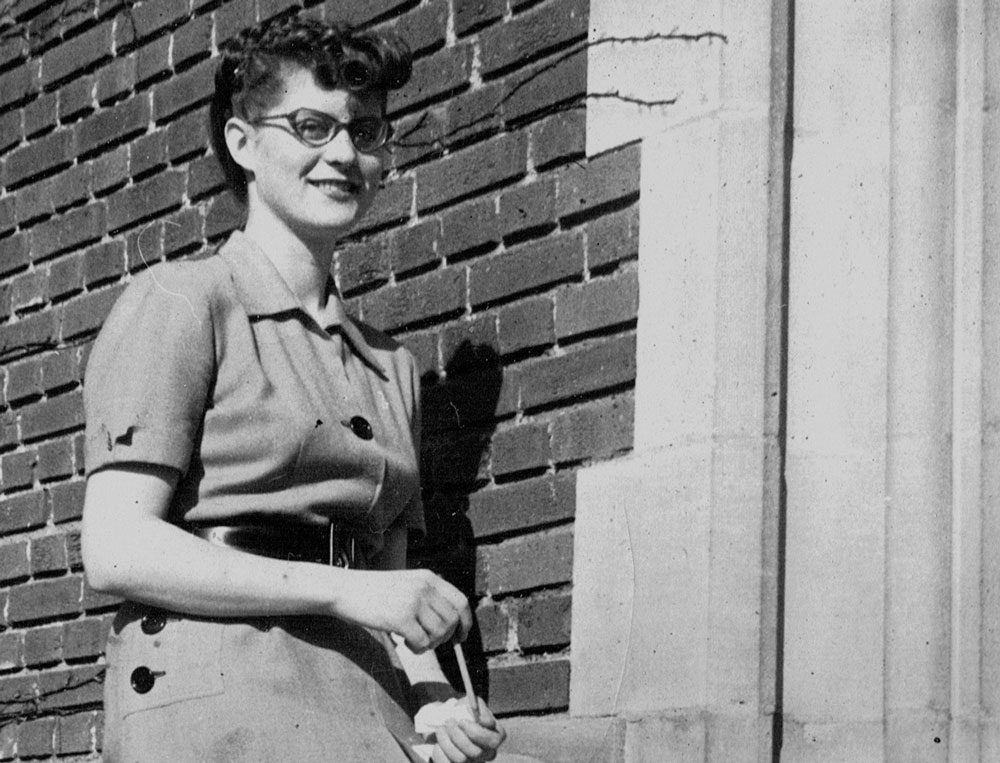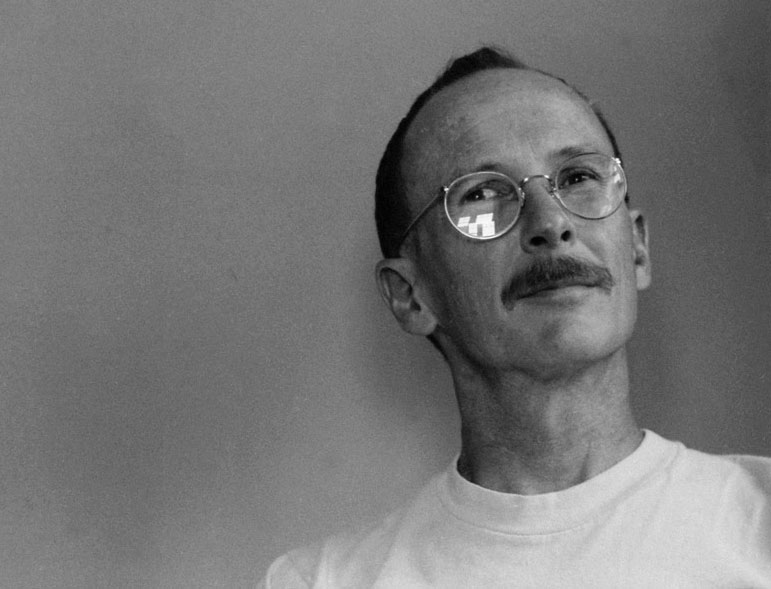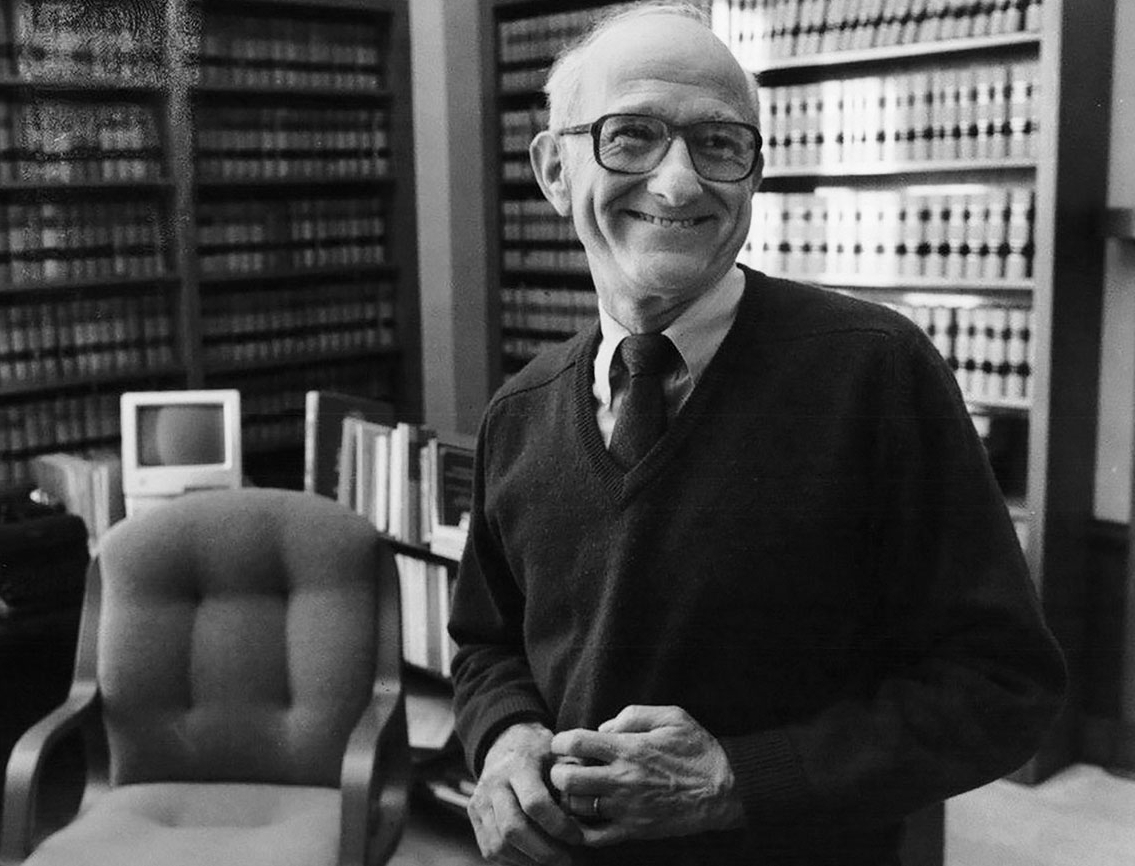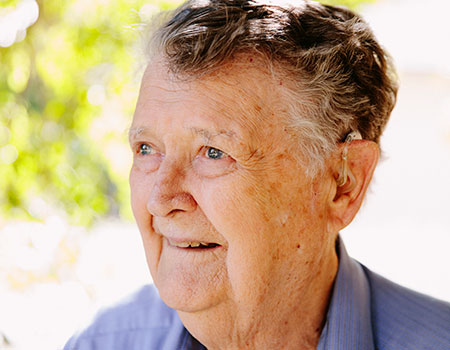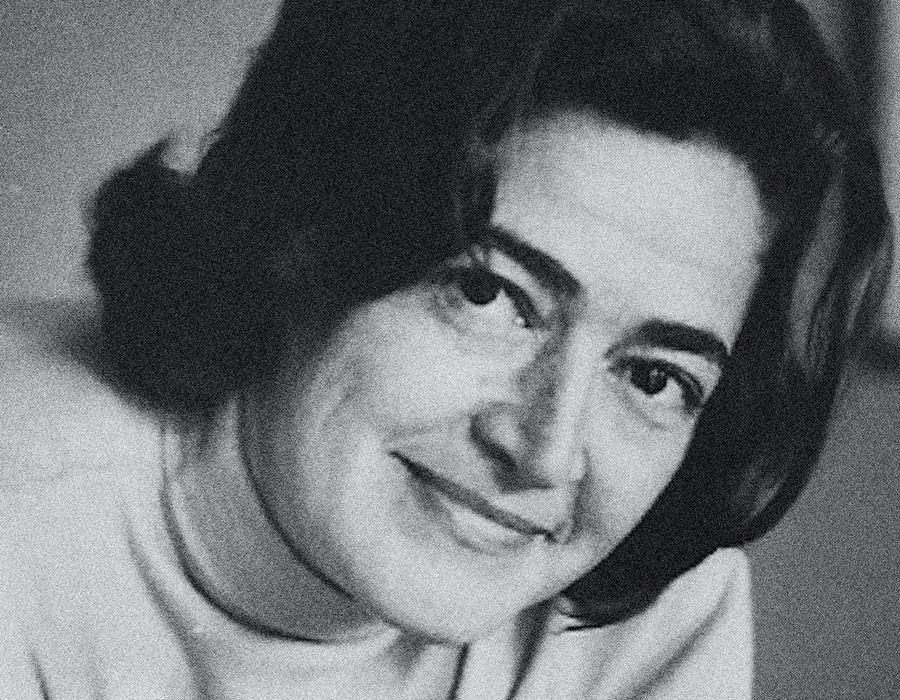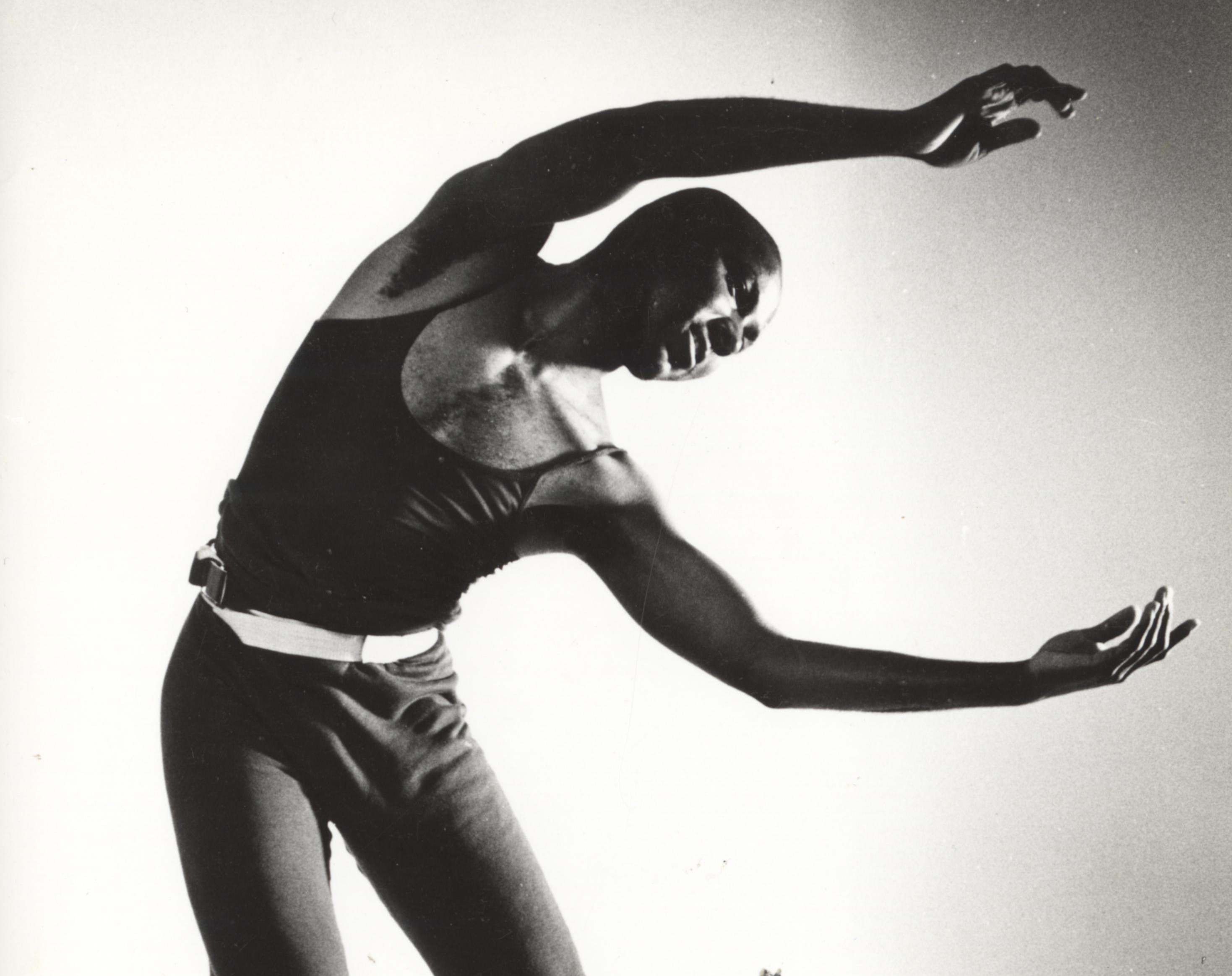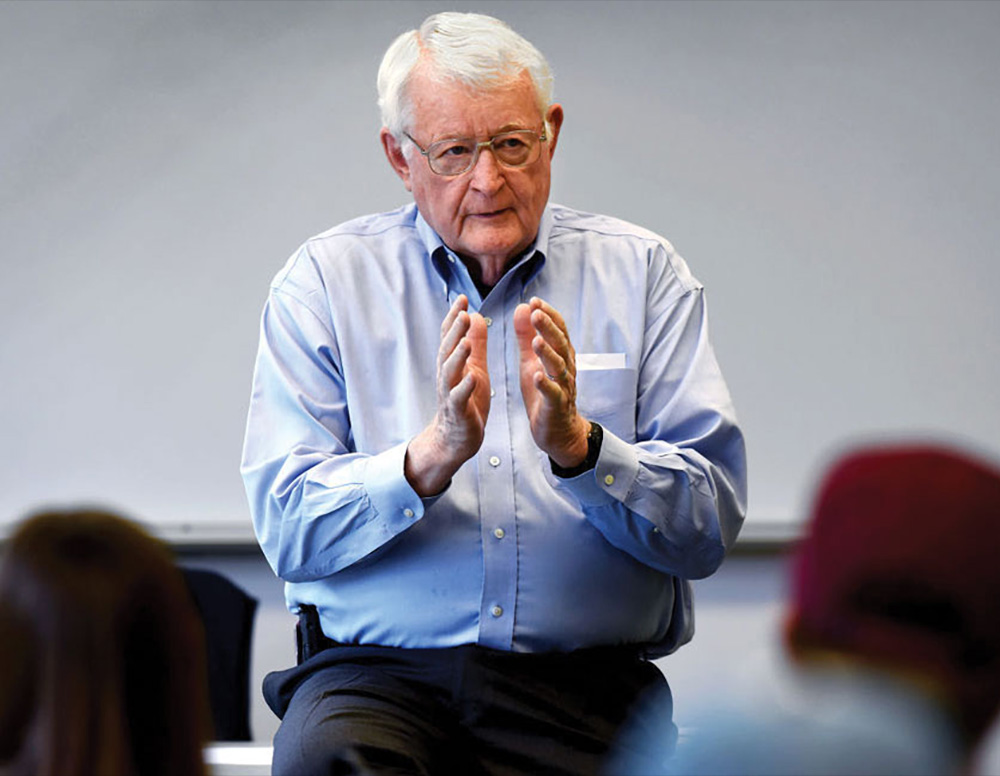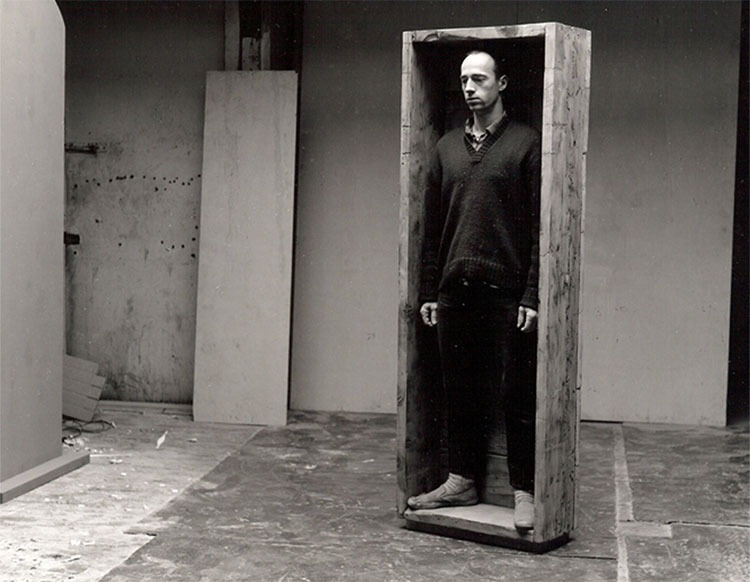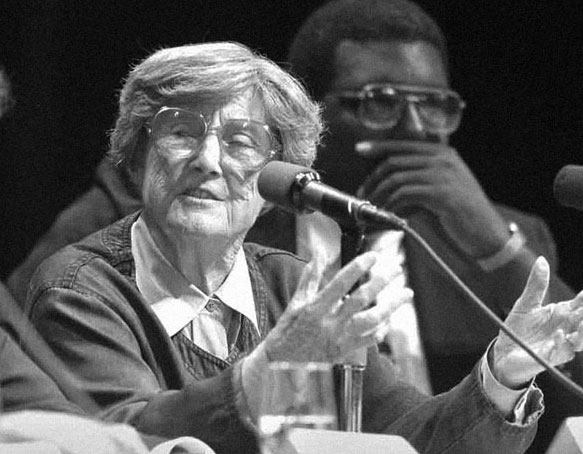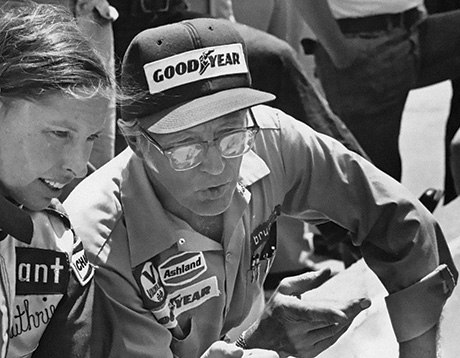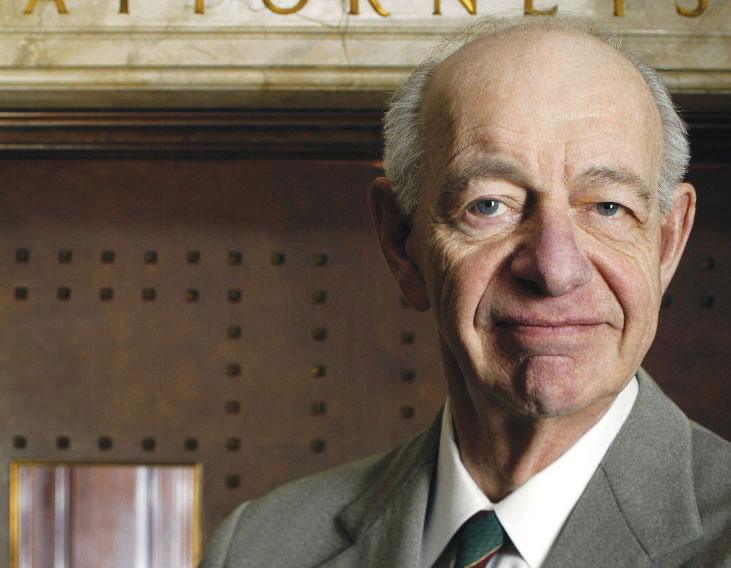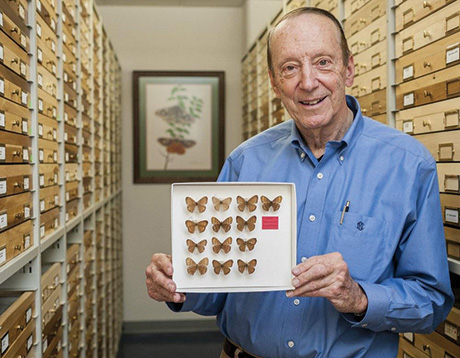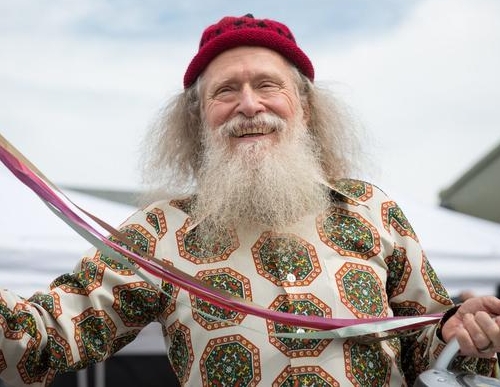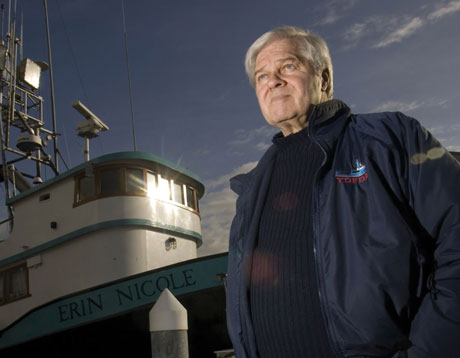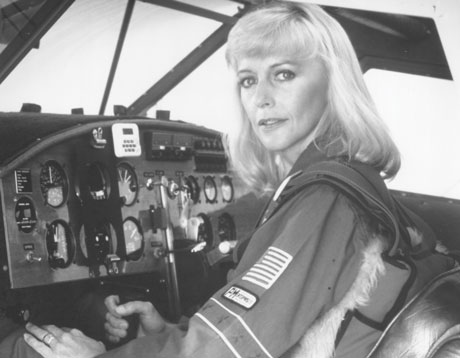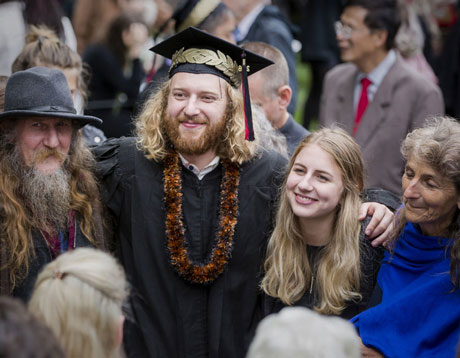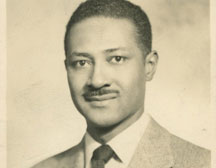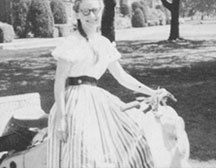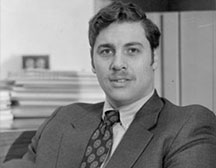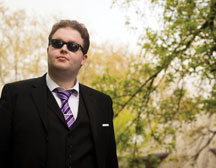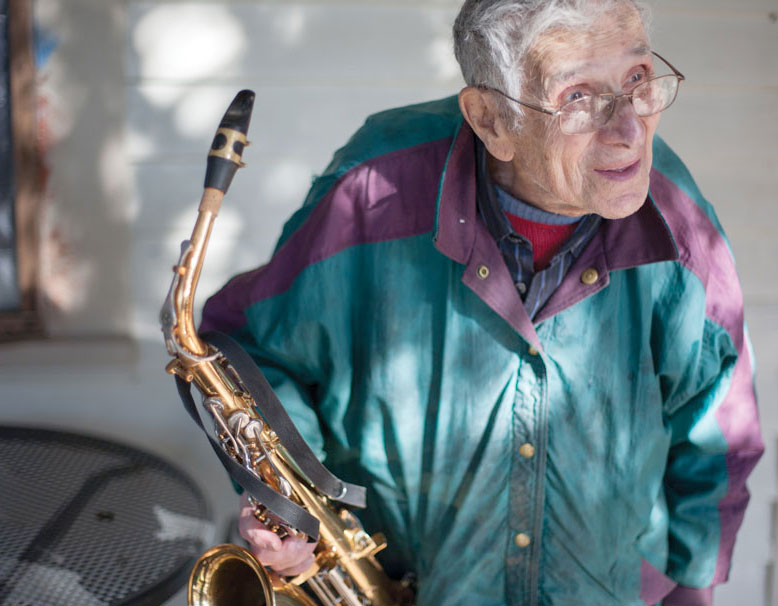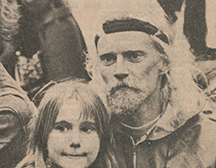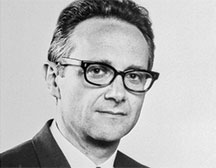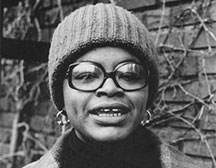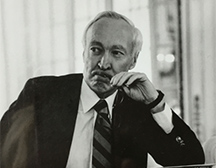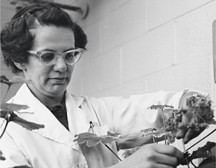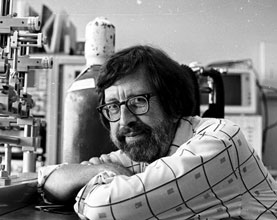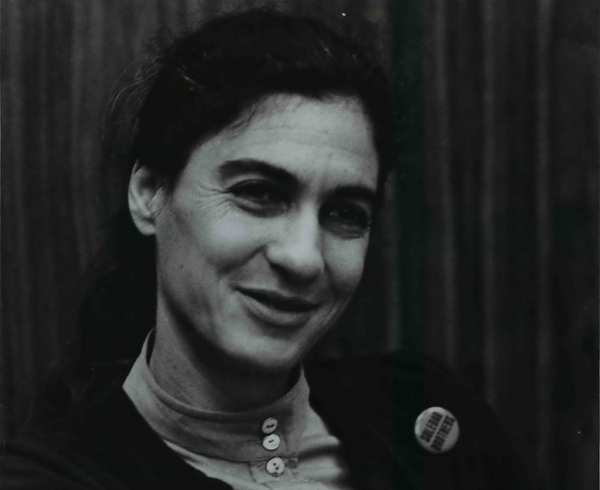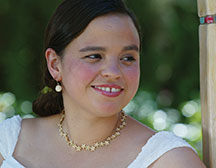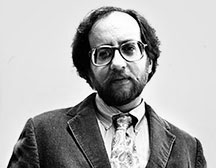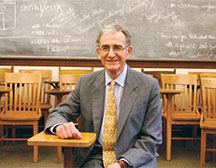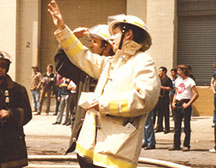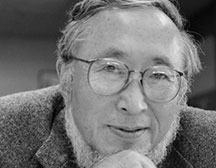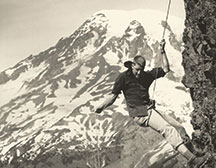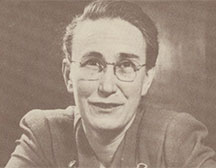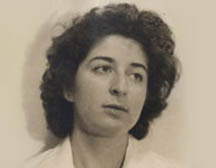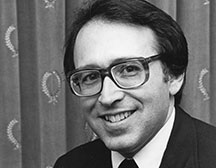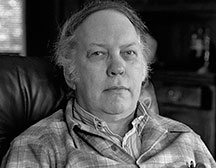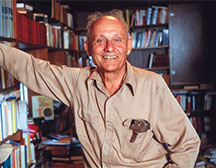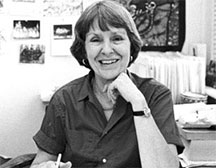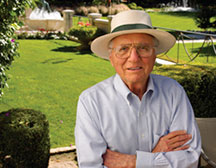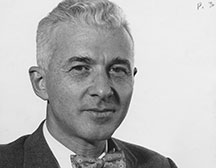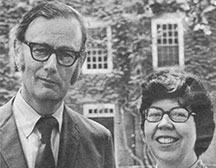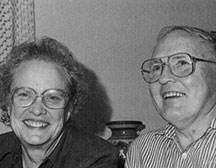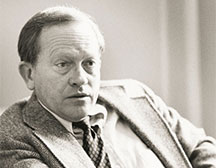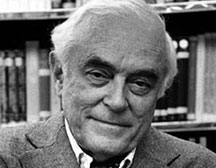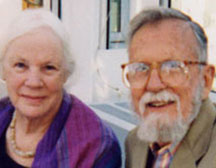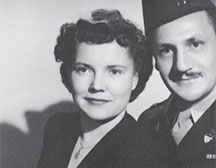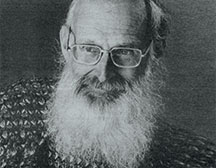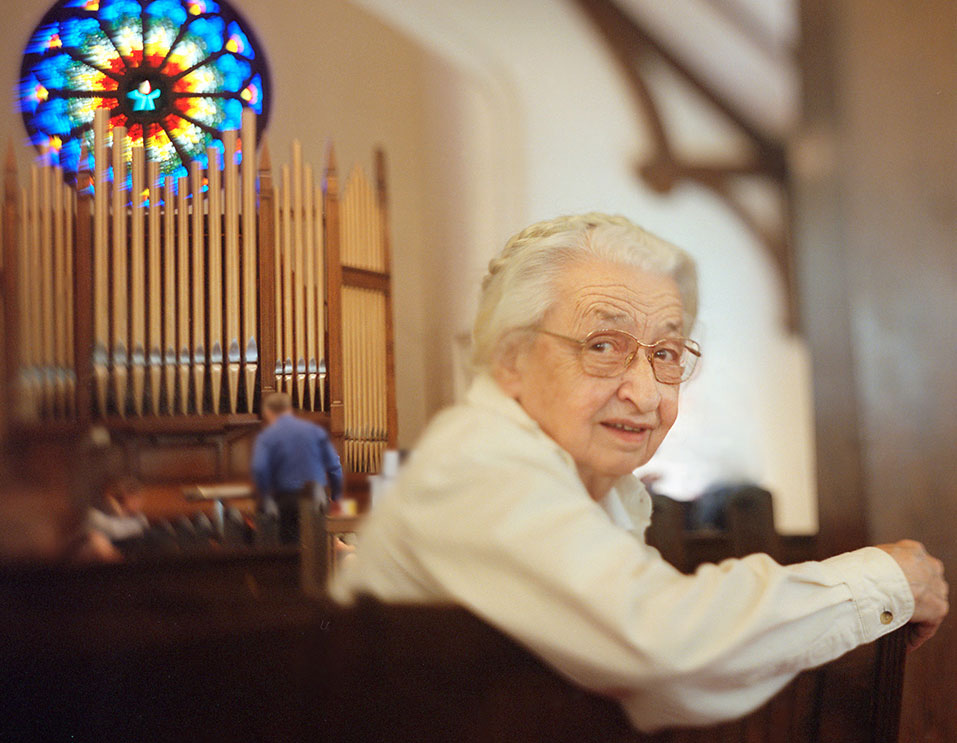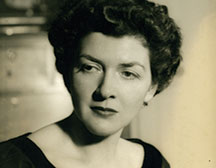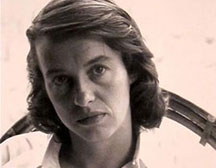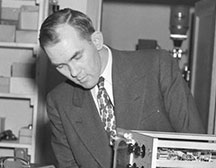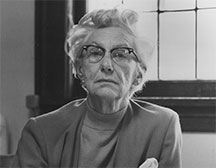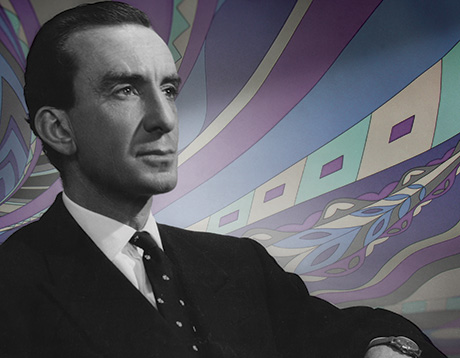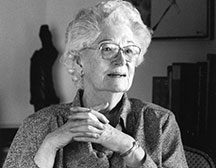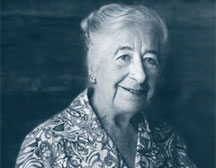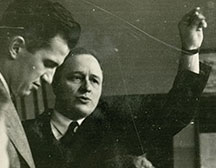Physicist Redefined Photography as Abstract Art Form.
Stephen Kahn ’66
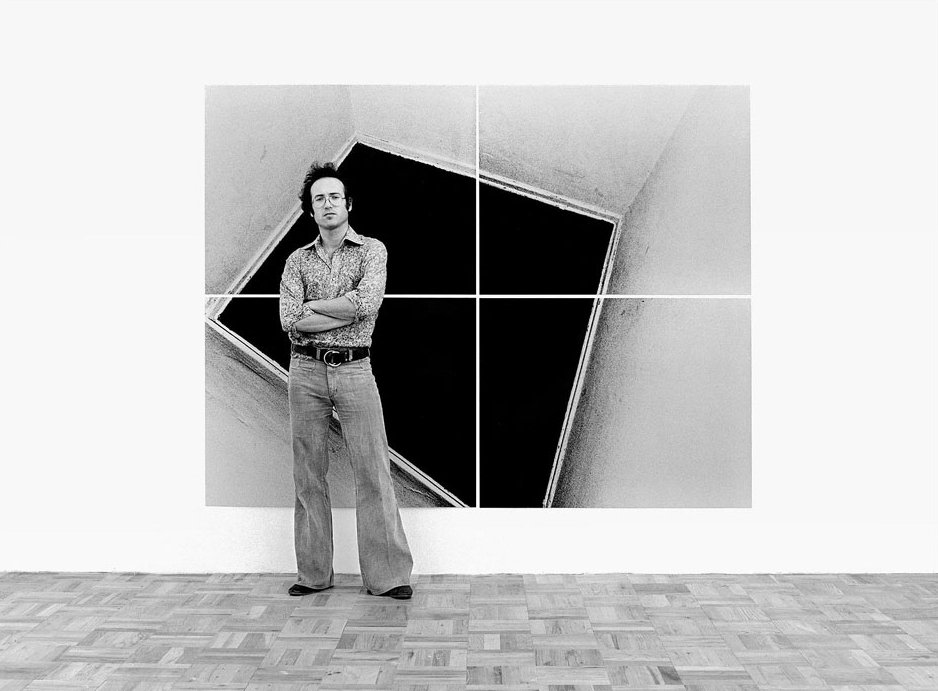
photo by Casemore Kirkeby
February 1, 2018, in Oakland, California, of cancer.
In 1974, Steve was working a brief stint as a photographer for a bondage magazine shooting at the Villa Constance, a down-and-out Hollywood apartment house renting by the day or by the hour. A handheld flash gave Steve’s images the blown-out look of evidence photos. But the compositions spoke to broader issues of bondage, containment, and isolation.
“On one occasion, the model didn’t show up,” Steve explained. “I found that I could explore the same issues by photographing the room itself—without the models.”
The container proved more interesting than the content—the banal hotel art, dilapidated curtains, and peeling window frames came together as isolated elements in giant, abstract, multiple-image presentations. The Hollywood Suites, as this body of work came to be known, ignited Steve’s career and helped to redefine photography as a serious medium for abstract art.
Born in Los Angeles in 1943, Steve majored in physics at Reed. He met his Reed roommate and best friend, Loren Madsen ’65, entirely by accident, even though their fathers held similar positions within the same company in different cities. The dads had alerted the sons to each other, but Steve and Loren cemented their friendship on drives to Linfield College in McMinnville to visit their girlfriends.
“Steve and I became roommates, sharing aspirations, the cost of booze, and the occasional girlfriend,” Loren remembered. “Steve, another friend, and I went to Europe for a year. Steve and I ended up in Positano before it was hip. Reed, in those days, disparaged art, which I wanted to pursue (it’s subjective and can’t be discussed rationally). Steve got his degree in physics. I got out.”
Steve wrote his thesis, “The ‘Already Unified’ Field Theory of Rainich, Misner, and Wheeler,” with Prof. Nicholas Wheeler [physics 1963–2010]. Even then, Wheeler remembered, Steve’s interests were divided between physics and photography.
“In the physics building (then new) there was a darkroom across the hall from my second-floor office,” Wheeler said. “It was unused, except for the refrigerator, in which Prof. Ken Davis [physics 1948–80] stored nuclear emulsions left over from an earlier stage of his career. Davis therefore guarded the darkroom jealously, and it was not easy for me—a very junior member of the physics faculty—to gain permission for Steve to put the darkroom to the use for which it was intended. There he did the work that resulted in private publication of ‘Cathedral,’ a collection of mostly Reed-based art photographs.”
Steve was an innocent player in a contretemps that involved his applying to grad school at Brandeis, from which Wheeler had taken his own PhD. One day, a friend of Wheeler’s found himself across the table from a young member of the Brandeis physics faculty at lunch.
“The drift of the conversation,” Wheeler recalled, “led the guy to mention that among the amusing absurdities encountered in his work as a member of the admissions committee was a letter from Reed College, in which the recommender remarked that he would not be astounded to learn that after a few years the applicant had abandoned physics in favor of a career in photography. My friend wrote back that I should be more careful about the construction of my letters of recommendation.”
Wheeler was right, however; Steve did abandon physics for photography. While doing graduate work in physics at New York University, Steve met David Serva, an accomplished American flamenco guitarist, who encouraged him to make a pilgrimage to Morón, the epicenter of Andalusian flamenco in Spain. The war in Vietnam was in full swing and Steve’s student deferment was revoked; he was called for duty. But after failing the army physical—and concerned that life was short—he set out for a three-month sabbatical to Spain to seek out the great pueblo flamenco guitarist Diego Amaya Flores del Gastor. Hours before boarding the plane, he took part in one of the first “Be-Ins” on May Day 1967, when thousands of young people converged on Central Park. Steve wondered if he should be leaving the United States just as so many exciting things were happening.
The more he learned about flamenco, the more he wanted to learn; the three-month leave turned into a two-year immersion. While in Spain, Steve married fellow Reedie Virginia Gilmore ’68 in Gibraltar and turned his focus on photography.
In the late ’60s, he settled in Los Angeles, where he made a living working as a stringer for magazines, including Life and Newsweek. On the side, he made art photography.
“I studied [photography] like a language and got my experience on the street, shooting what was around me,” he said.
His work was included in a 1973 exhibition at the San Francisco Museum of Modern Art, and he published a book, Stasis, followed by other important exhibitions. In 1979, he won the Young Talent Purchase Award from the Los Angeles County Museum of Art, and the next year won a fellowship from the National Endowment for the Arts. Later he produced photo essays on Spanish Gypsy flamenco musicians and dancers, people and places in India, chemical plants, and death row inmates in San Quentin.
In 1970, Steve and Loren Madsen purchased 40 acres in northern California with friends and built a shared cabin.
“Our relationship was one of those where an interruption of a few years was bridged in a few minutes,” Loren said. “We both ended up living in NYC—abandoning the hippie lifestyle as too damn much work—where the families—he and his wife and child and I with mine—had dinner most Saturdays.”
It is notoriously difficult to maintain an art career, and by 1986, Steve had moved to New York to pursue commercial photography. He continued to produce art, including a book of photographs of his neighborhood titled Soho New York, published by Rizzoli in 1999. In 2002, he produced a group of post-9/11 portraits titled Subway Series.
He moved to Berkeley in 2012 and began showing his earlier work, which met with success. Steve’s works were acquired by major institutions throughout the United States, including the Museum of Modern Art, the Metropolitan Museum of Art, the National Gallery of Art, the Art Institute of Chicago, the J. Paul Getty Museum, the Los Angeles County Museum of Art, and San Francisco’s de Young Museum and SFMOMA. In 2018, a solo exhibition of his work was exhibited at the de Young, and his book, Chemical Plants, was published by Nazraeli Press.
“Steve’s first cancer symptoms developed here in northern California,” Loren said. “He fought it for four and a half years. His ashes reside here. We tend them regularly.”
Steve is survived by his daughter, Zoe Kahn, and sister, Susan Ansen. He was married for 23 years to Zoe’s mother, Robin Amos Kahn.
Appeared in Reed magazine: September 2019
comments powered by DisqusFrom the Archives: The Lives they Led
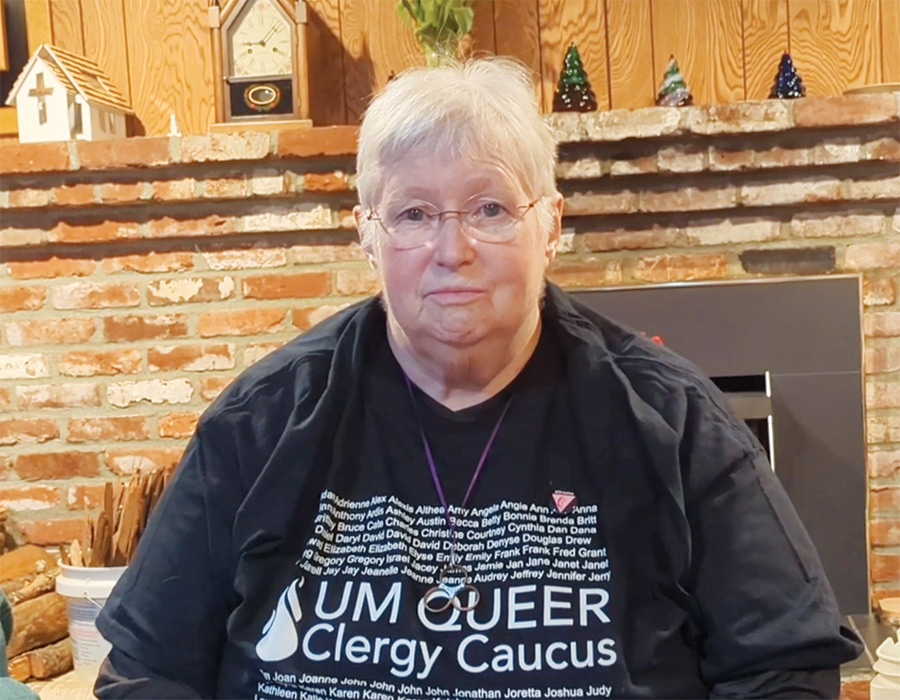
Jeanne Knepper ’69
The First Openly Gay Woman to Be Ordained and Appointed Within the Oregon-Idaho Conference of the United Methodist Church
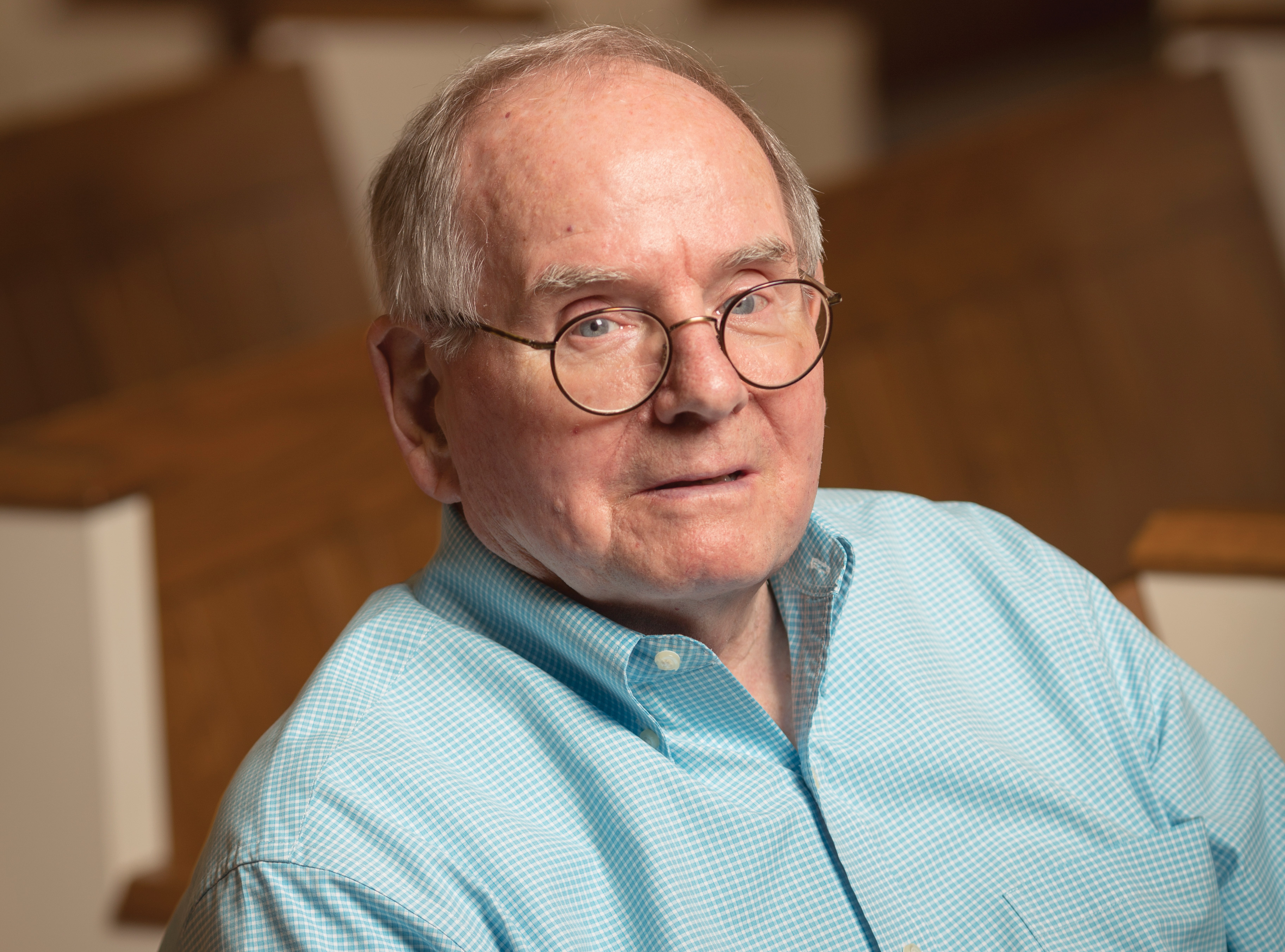
William Haden
As Acting President of Reed, He Strengthened the College's Finances and Alumni Relations
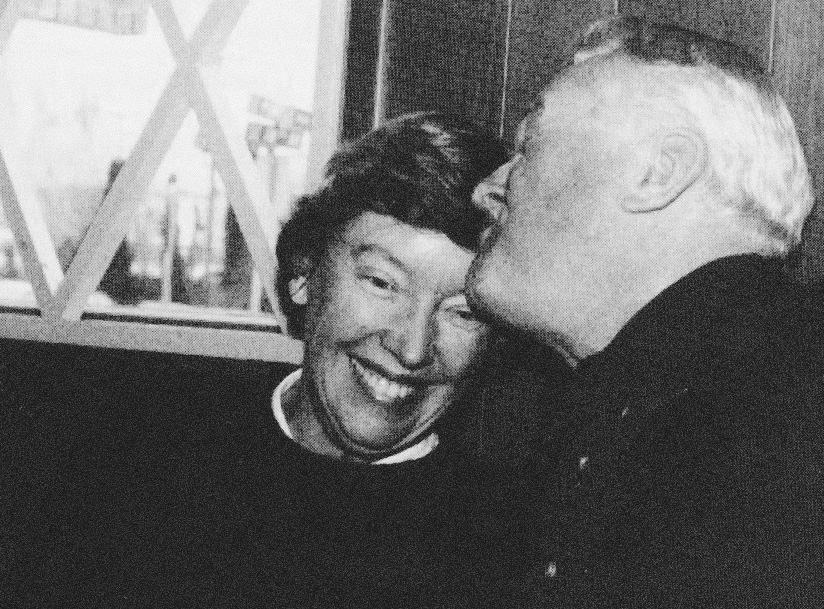
Nancy Horton Bragdon
Reed’s First Lady Whose Warmth and Leadership Were Invaluable During a Turbulent Time

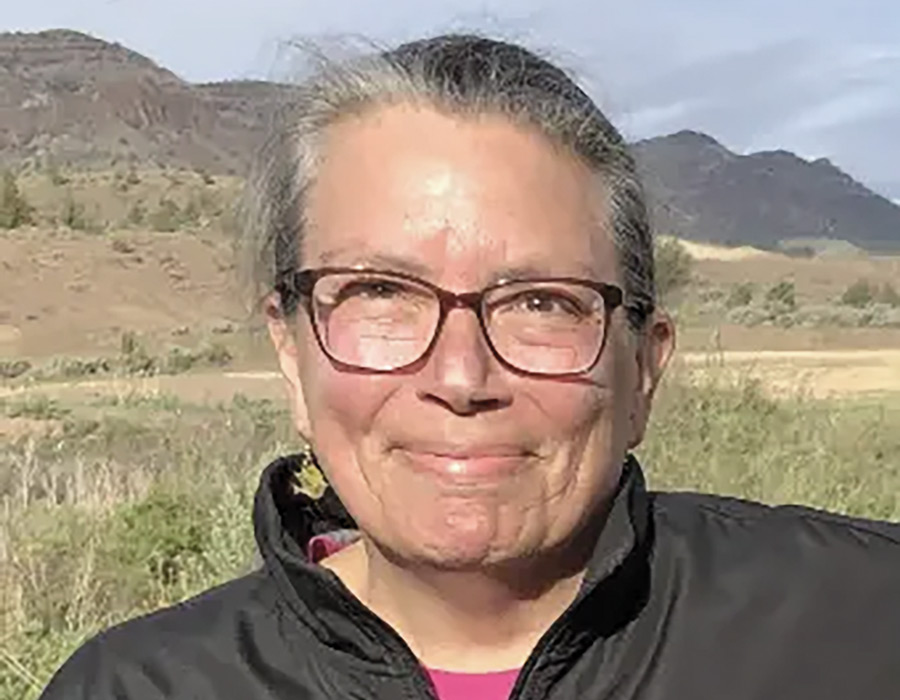
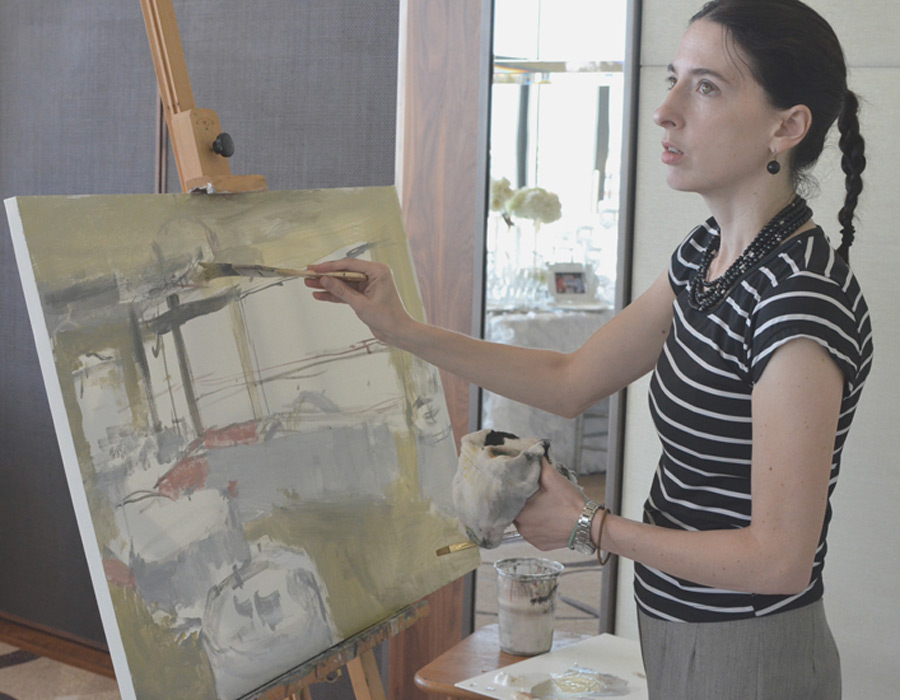
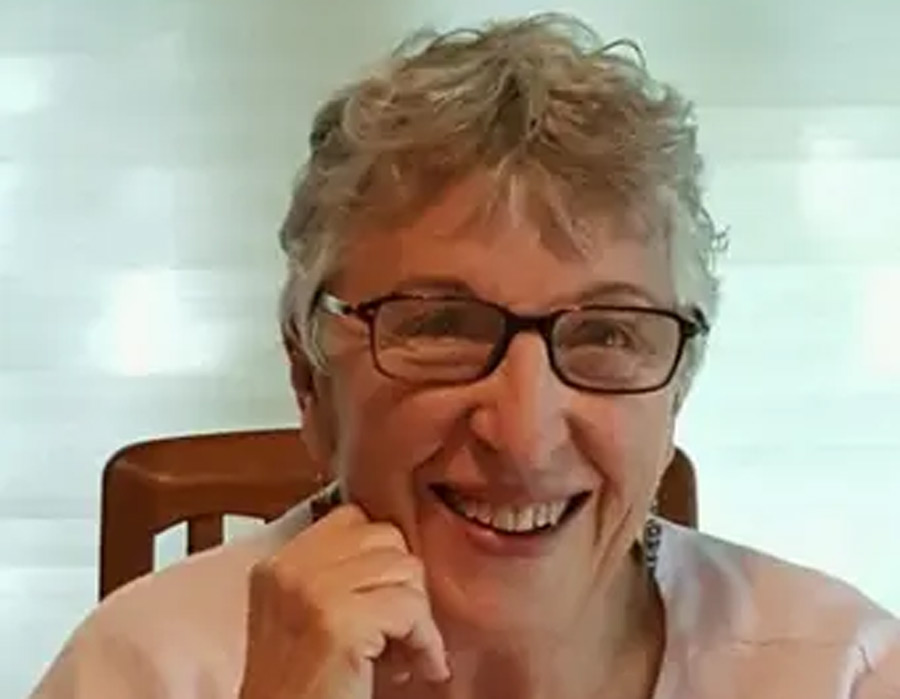
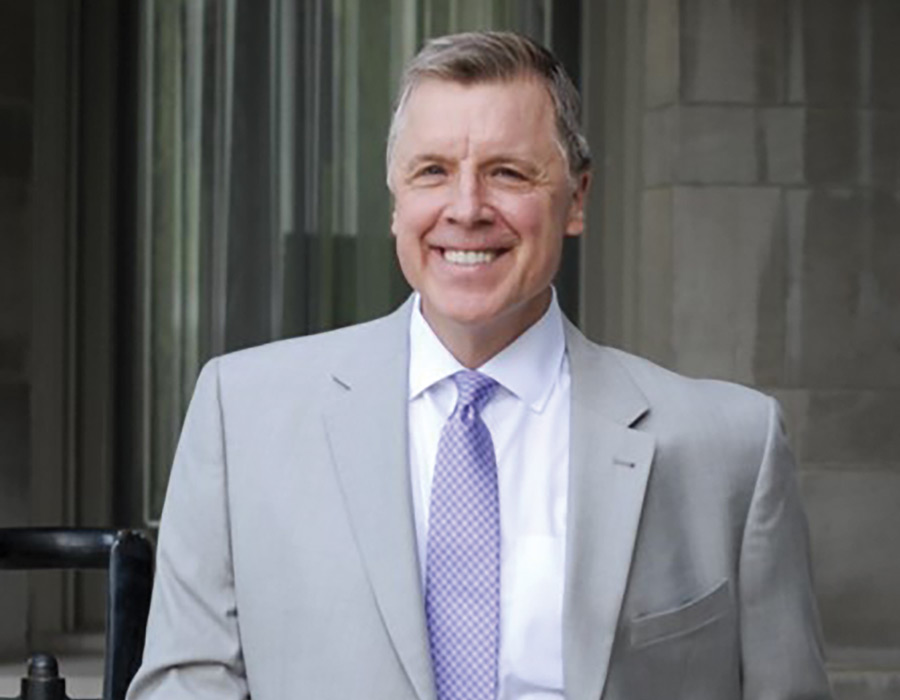
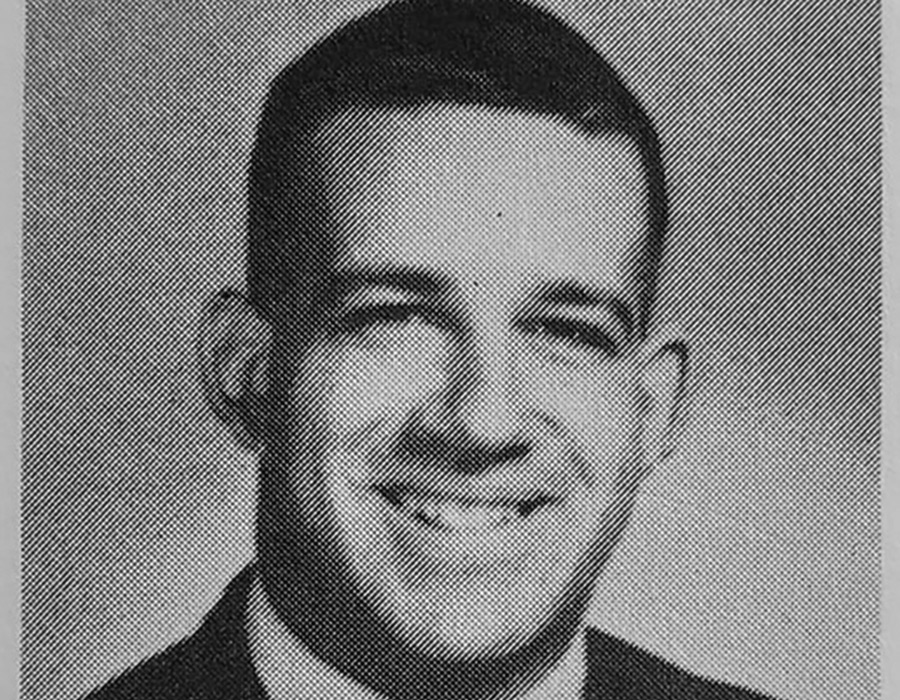
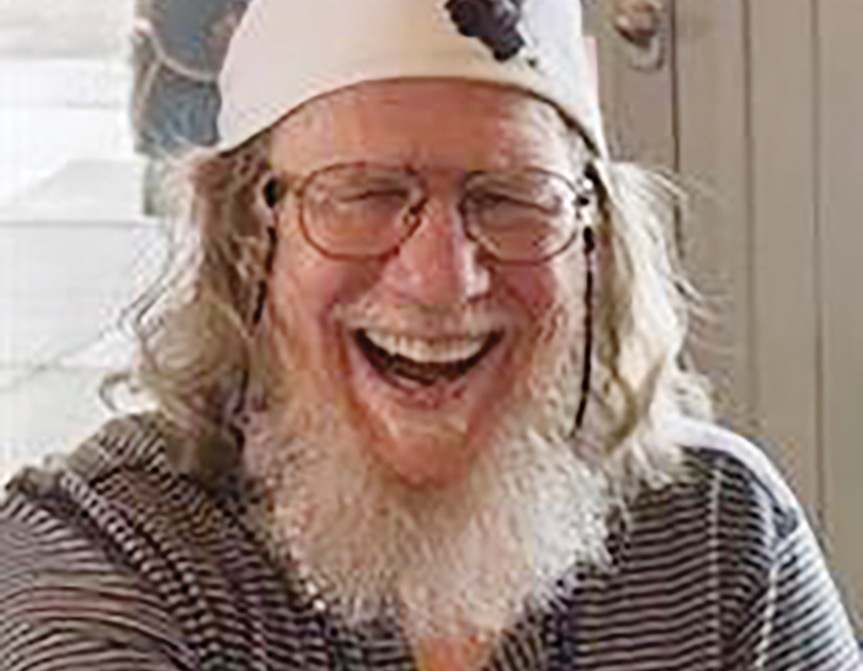
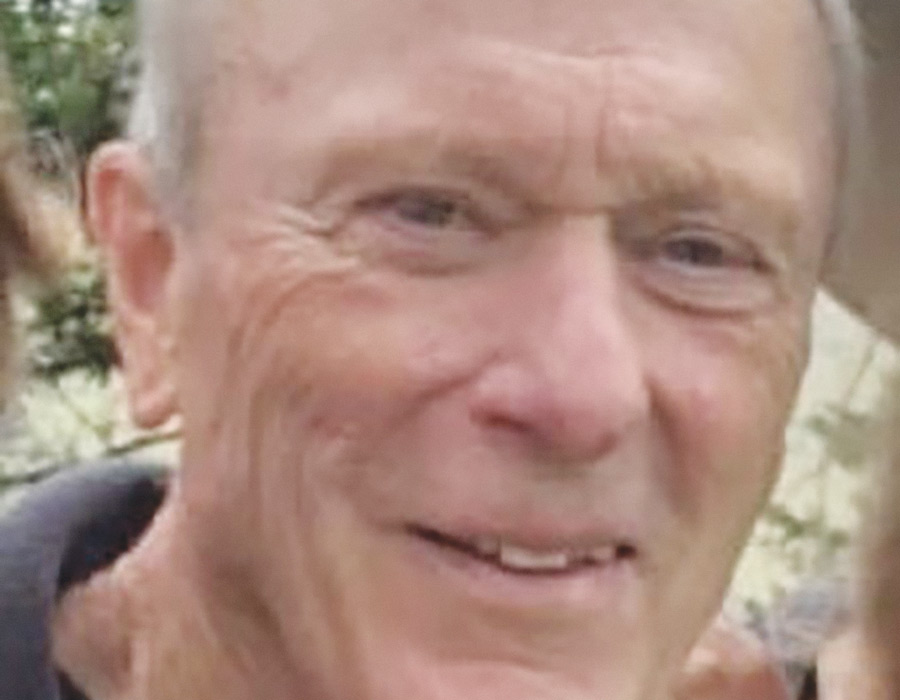
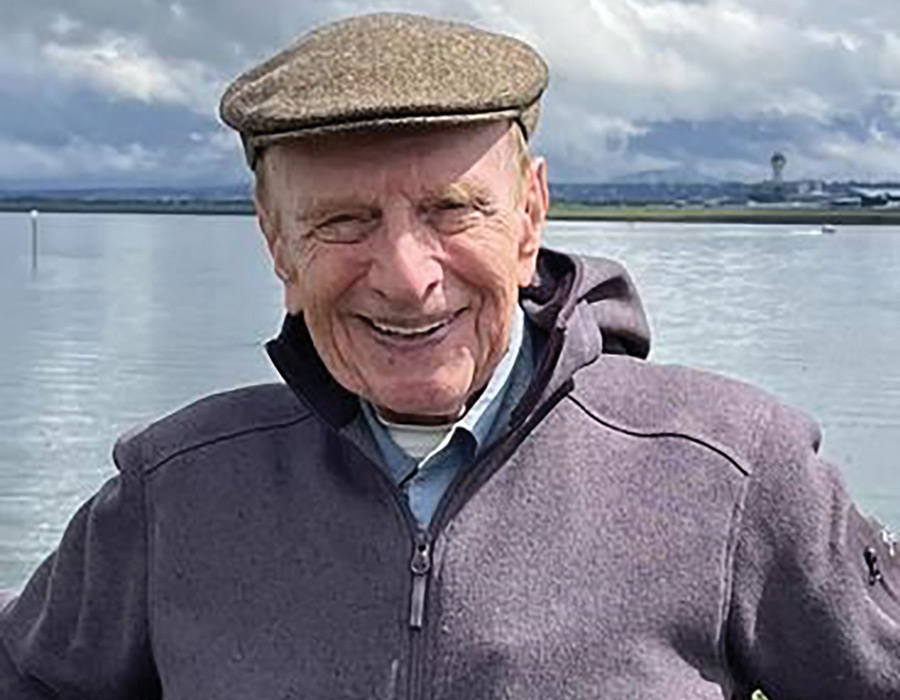
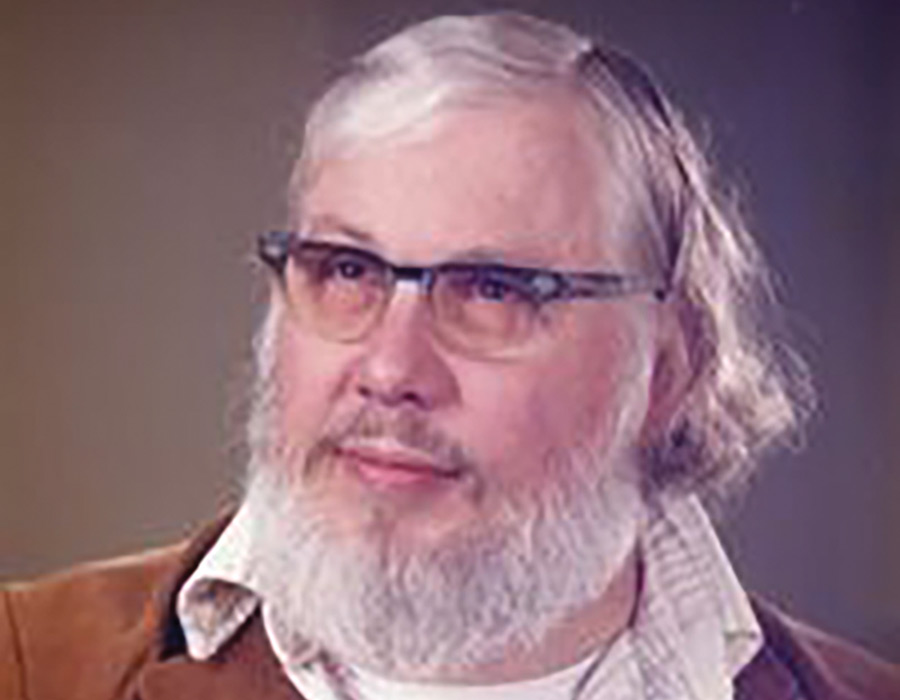
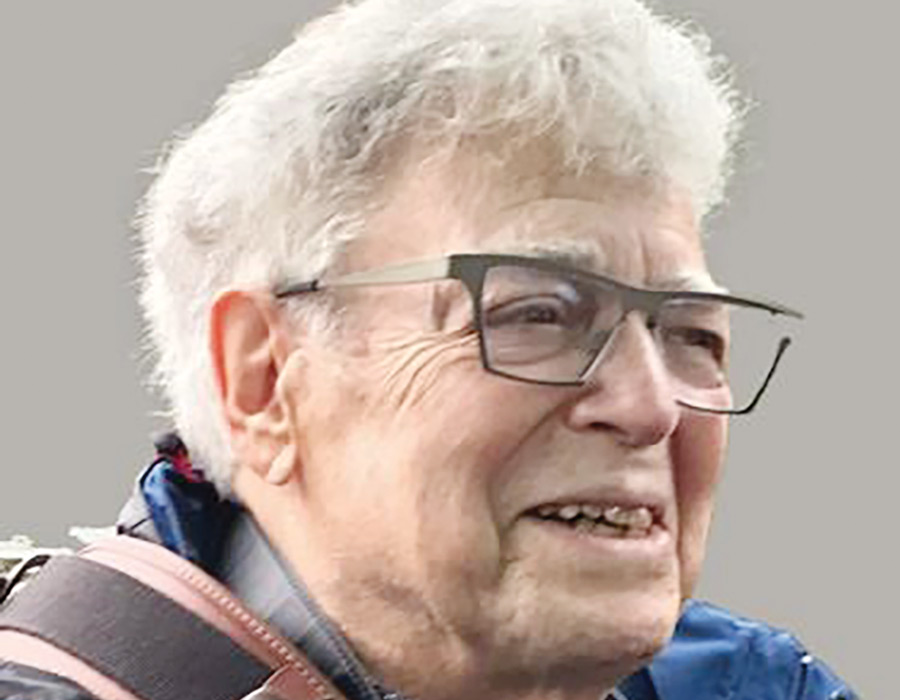
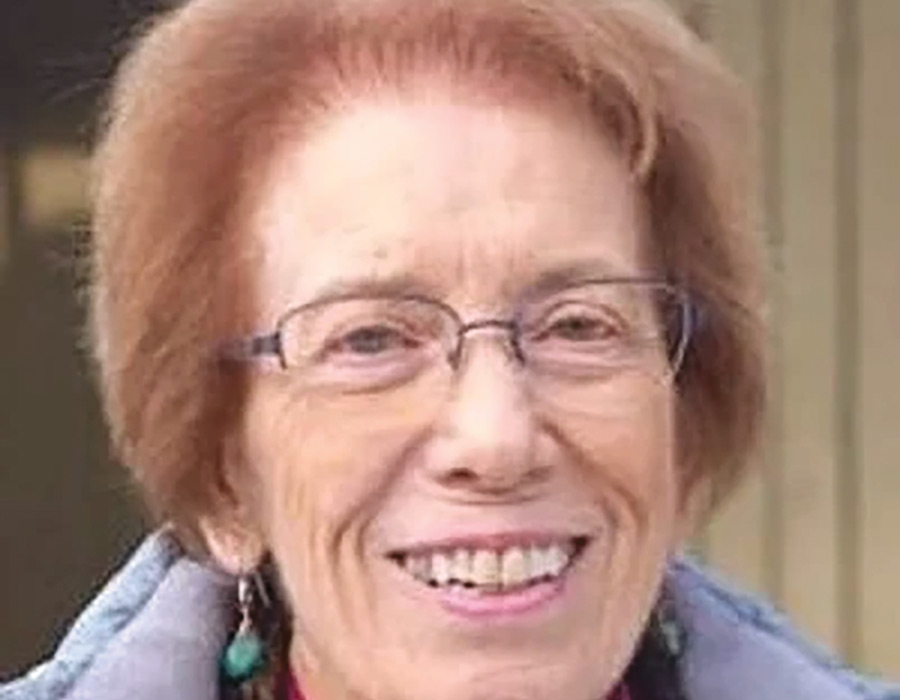
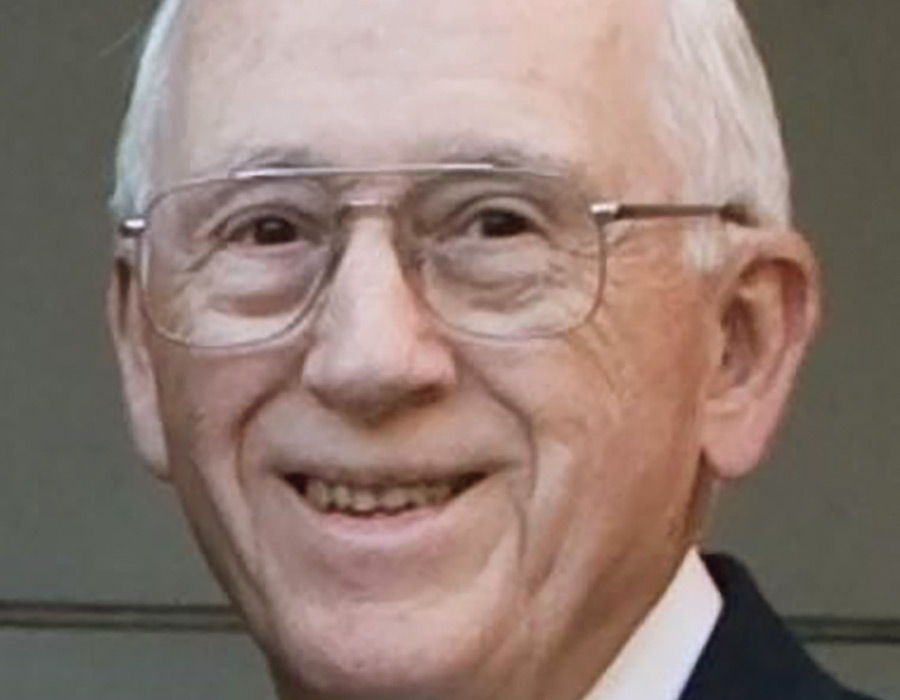
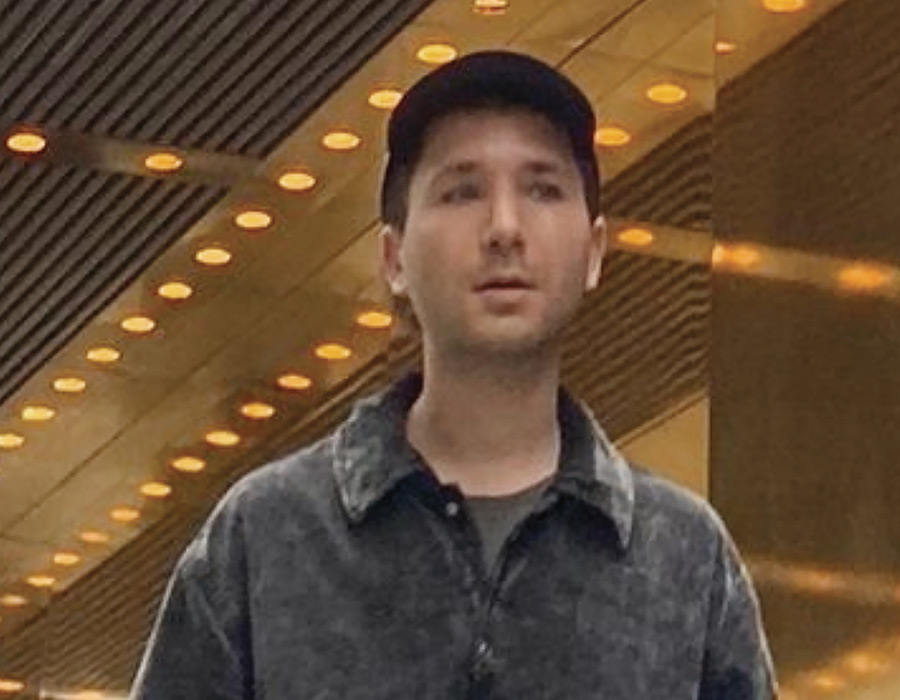
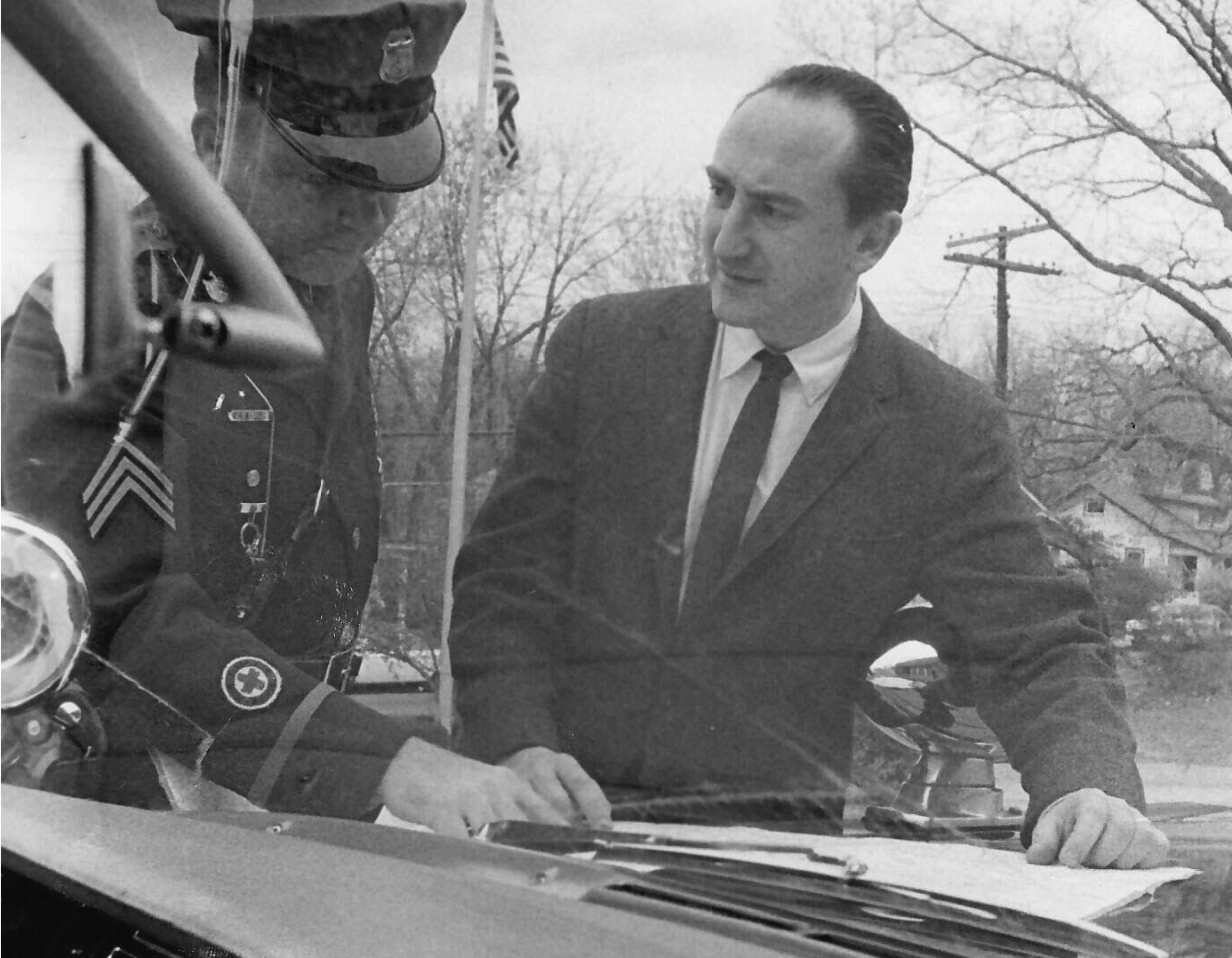
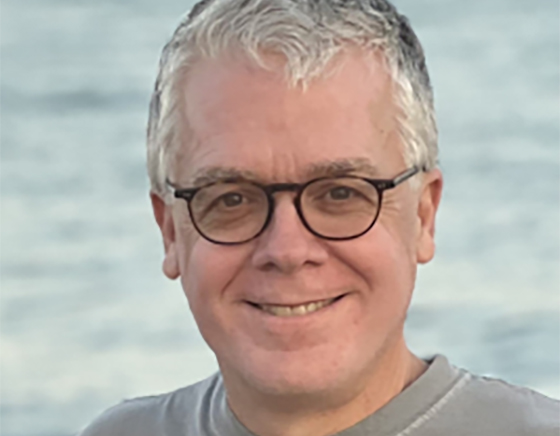
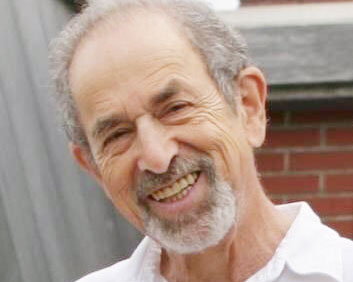
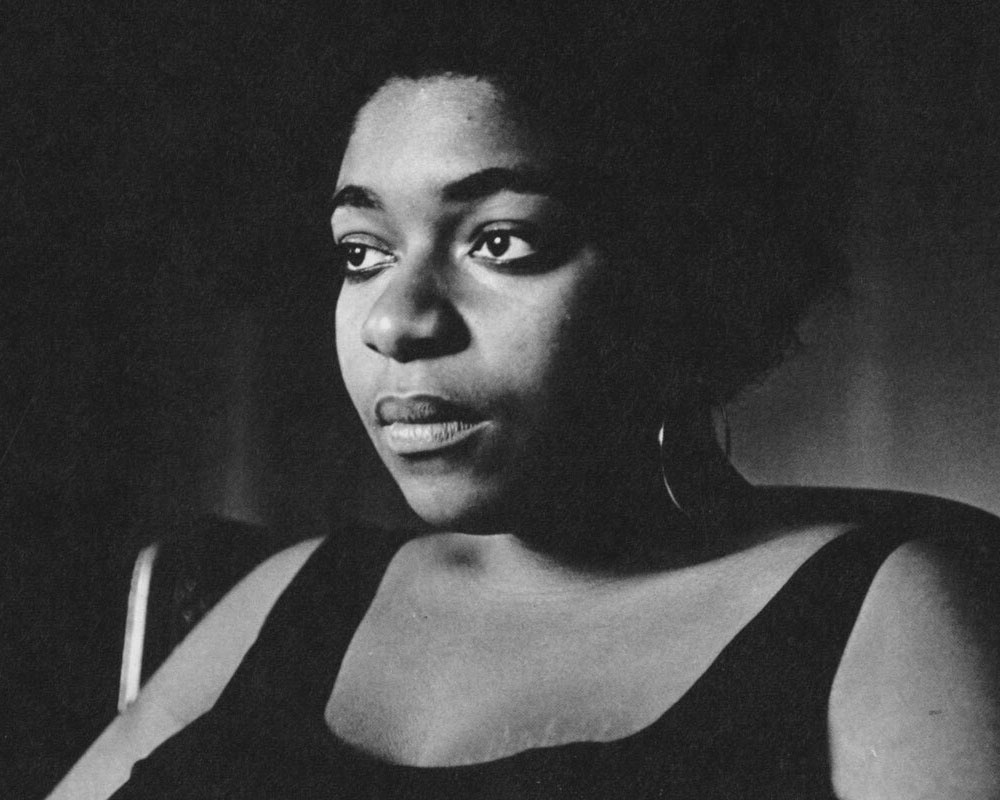
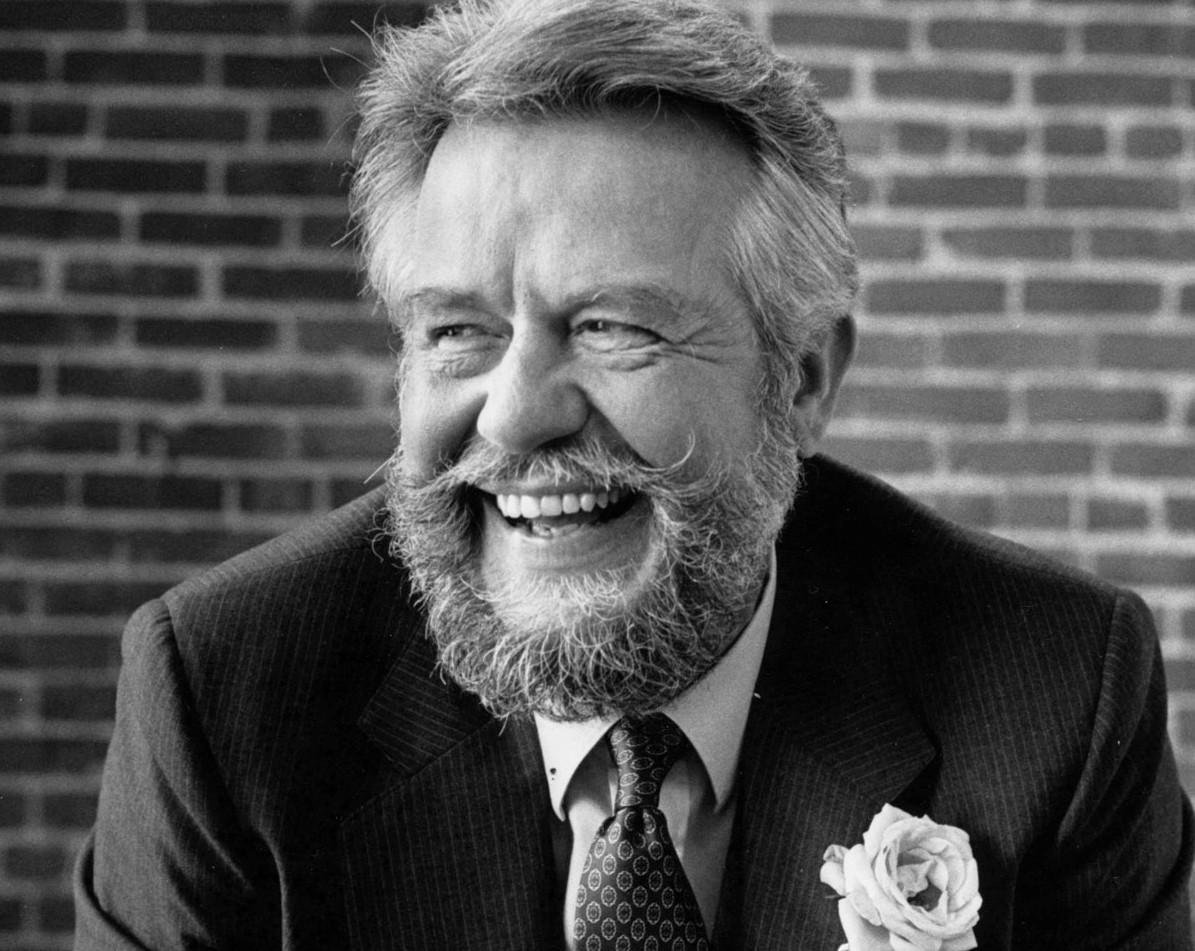
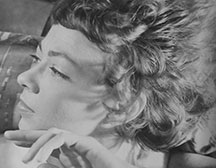
![Photo of Prof. Marvin Levich [philosophy 1953–94]](https://www.reed.edu/reed-magazine/in-memoriam/assets/images/2022/LTL-levich1.jpg)
![Photo of President Paul E. Bragdon [1971–88]](https://www.reed.edu/reed-magazine/in-memoriam/assets/images/2020/Bragdon.jpg)
![Photo of Prof. Edward Barton Segel [history 1973–2011]](https://www.reed.edu/reed-magazine/in-memoriam/assets/images/2020/Segel.jpg)
